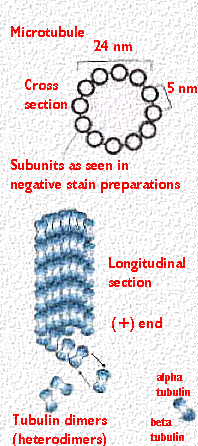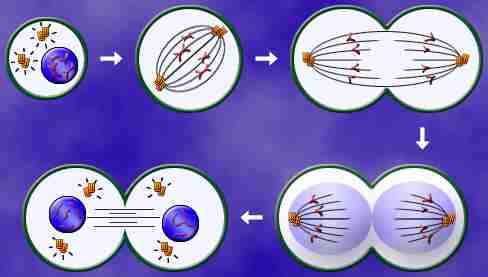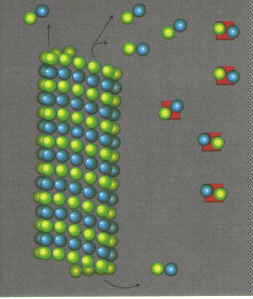Sandbox Reserved 456
From Proteopedia
| This Sandbox is Reserved from 13/03/2012, through 01/06/2012 for use in the course "Proteins and Molecular Mechanisms" taught by Robert B. Rose at the North Carolina State University, Raleigh, NC USA. This reservation includes Sandbox Reserved 451 through Sandbox Reserved 500. | |||||||
To get started:
More help: Help:Editing For more help, look at this link: http://www.proteopedia.org/wiki/index.php/Help:Getting_Started_in_Proteopedia
TubulinIntroductionTubulin is a globular protein. The most common types of tubulin are alpha and beta tubulin. Its main function is to create microtubules. The alpha and beta proteins polymerize to create the microtubule. Gama Tubulin is also an important tubulin protein. Tubulin is used in plants as well as animals. For plants, it is important for acentrosomal microtubule nucleation in plants. This can be shown in Arabidopsis. The gama tubulin protein binds with other proteins in order to create a “cap” at the negative end of the microtubule and acts as a scaffold for the alpha/beta tubulin dimer to polymerize. In plants, many viruses such as gemini-viruses can attack these proteins and cause cell death which leads to plant death. One particular study by Keech et al showed that Cabbage Leaf Curl Virus (CaLCuV) induced senescence in Arabidopsis plants which lead to plant death. [1] Microtubules are important for maintaining cell structure, providing platforms for intracellular transport, forming the spindle during mitosis, as well as other cellular processes. The microtubules may also help to move things in the cell like vesicles, granules, organelles, and chromosomes by using special attachment proteins.[2] Because mictotubules play such an important role in cell growth, researchers are looking at ways to prevent the formation of microtubules in many cancer drugs. By preventing its formation, mitosis can not continue and thus the cell cannot divide and cell growth cannot continue. Structure
The picture shown is of the dimerized alpha and beta tubulin [3] . This structure was created using electron crystallography. Each part is important in creating the microtubule for plant growth. The alpha portion provides the negative end of the tubule while the beta end provided the positive end. Each portion holds about 450 amino acids. The positive end of the growing microtubule is where most of the dimers are added so that the micortubule can continue to grow in length.[2] This is the of the alpha-beta tubulin heterodimer. This is where the new dimer will attach and allow for the microtubule to continue growing in length. This is the of the dimer. The ligand is used to attract Magnesium which is used in the formation of the heterodimer between the alpha and beta tubulins. Much of the tubulin dimer is . is importatnt for polymerization. It helps to bind all of the componenets of the microtubule together. It hydrolyzes to GDP once the dimers are together. GTP is importatnt because it provides energey for the units to polymerize. The beta portion of the dimer is where the hydroplysis of GTP takes place. When the microtubules are formed, a lattice structure is created. Vertically, the microtubules is made of hydrolyzed alpha and beta subunites.[4] horizontally, the lattice is connected with beta-beta and alpha-alpha connections. This helps to form the lattice, helical shape of the microtubule .[2] Mechanism of ActionIn order for the Tubulin proteins to form the microtubules, they must first begin by starting at the stage of nucleation. This occurs when the tubulin alpha and beta Tubulin combine to form a heterodimer and then combine with other heterodimers to form oligomers. This step also requires GTP and Magnesium. They attach by hydrolyzing the GTP into GDP at the beta end. The mictobule continues to grow as the dimers continue to hydrolyze to each other.[5]
One of the main purposes for tubulin and microtubules is to participate in mitosis. The microtubules make up the arm of the spindle fibers. The positive of the microtubules attaches to the kinetochore plate of the chromosome, it stableizes and begins to separate the chromosomes. Once the chromosome is completely separated and mitosis is completed, the microtubule degrades.[6] ApplicationsTubulin is an important protein related to plant growth. By understanding how Tubulin reacts to certain viruses, researchers can better understand how plants are affected by viruses. Once this is understood, researchers can possibly find ways to prevent cell and plant death. Colchicine, colcemid, and nocadazol inhibit polymerization by binding to tubulin and preventing its addition to the positive ends of the forming microtubule. By preventing the formation of the mictorubules by binding to tubulin dimers, the cell cycle can not proceed. This is used in cancer treatments to prevent the growth of the canceris masses.
References
|



